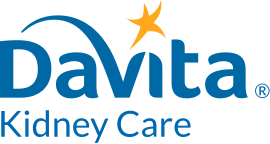Provided by DaVita® Dietitians
Most people think that salt and sodium are the same. Salt is actually the mineral compound sodium chloride. Foods we eat may contain sodium chloride (salt) or sodium in other forms.
Although your body needs sodium to function, too much sodium can be bad when you have chronic kidney disease (CKD) . Normally, sodium helps maintain the right fluid balance in your body. But in later stages of CKD , your kidneys cannot get rid of excess sodium and fluid. The sodium and fluid can build up in your body, causing your blood pressure to rise and increasing damage to your kidneys.
If you have CKD or require dialysis , your doctor or your renal dietitian may advise you to follow a low-sodium diet that includes limiting salt and other sodium-containing ingredients.
Problems from too much sodium
If you get too much sodium in your diet, the extra sodium and water in your body may cause problems such as:
- Swelling of the hands, feet, face or legs
- Difficulty breathing or shortness of breath (from fluid in the lungs)
- Higher blood pressure and extra strain on the heart
- Cramping and blood pressure drops during dialysis
To prevent these problems, you will need to limit or cut out salty foods. Doing so may also help you control how much fluid you drink because high-sodium foods cause thirst.
Foods high in sodium
It’s good to be mindful about the sodium content of the foods you eat. Start by checking labels when you’re buying food at the supermarket. Also, avoiding potassium chloride-based salt substitutes and products made with salt substitutes is recommended for people with kidney disease on a potassium limit because they are high in potassium
Here are just some of the foods that can contain high amounts of sodium:
Salt and salt seasonings
|
Bouillon cubes and granules |
Flavored salt, including garlic, celery and onion salt |
|
Kosher salt |
Lemon pepper |
|
Lite salt |
Meat tenderizer |
|
Monosodium glutamate (MSG) |
Sea salt |
|
Seasoning salt |
Table salt |
Sauces
|
Barbecue sauce |
Catsup |
|
Marinades |
Soy sauce |
|
Steak sauce |
Teriyaki sauce |
Salty snack foods
|
Corn chips |
Nuts |
|
Potato chips |
Pretzels (unless unsalted) |
|
Pumpkin seeds |
Salted crackers |
|
Salted popcorn |
Tortilla chips |
Cured foods
|
Bacon |
Ham and lunch meats |
|
Olives |
Pickles |
|
Relishes |
Salty pork |
|
Sauerkraut
|
Sausage |
Dairy
|
Buttermilk |
Cheese |
|
Instant pudding mix |
|
Canned goods
|
Beef entrées |
Canned vegetables (unless canned without salt) |
|
Soups (unless low-salt; check the label carefully as most low salt soups contain potassium) |
Tomato products |
|
Vegetable juices |
|
Convenience foods
|
Chili |
Chinese food |
|
Dry soup mixes |
Fast food |
|
Frozen dinners and entrees |
Frozen prepared foods |
|
Macaroni and cheese |
Ramen noodles |
Summary
People with kidney disease need to be especially careful of the amount of sodium in their kidney diets because of sodium’s tendency to raise blood pressure, increase fluid retention and lead to serious health issues. Your dietitian can help you figure out a low-sodium eating plan that is right for you. Knowing which foods are high in sodium and then eating less of them can help support your overall health.


